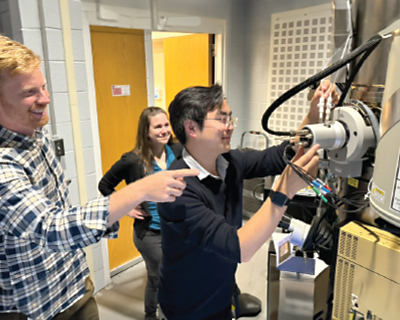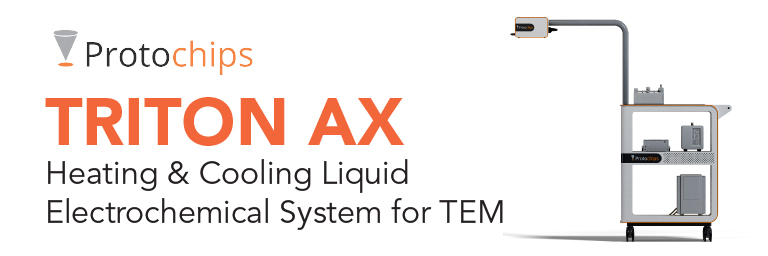
The only system for studying electrochemical processes at the nanoscale at temperatures ranging from -50 °C to 300 °C.
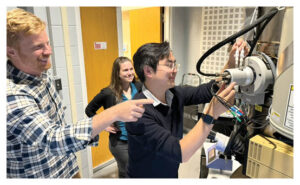 Triton AX is the newest member of the Protochips in situ TEM portfolio and offers an unprecedented temperature range of -50 °C to 300 °C to be applied to liquid electrochemical experiments. This huge technological advancement provides a platform for studying batteries, electrocatalysts, corrosion, and nanomaterial synthesis at relevant or extreme temperatures to propel innovation.
Triton AX is the newest member of the Protochips in situ TEM portfolio and offers an unprecedented temperature range of -50 °C to 300 °C to be applied to liquid electrochemical experiments. This huge technological advancement provides a platform for studying batteries, electrocatalysts, corrosion, and nanomaterial synthesis at relevant or extreme temperatures to propel innovation.
With Triton AX, you can:
- Create realistic and relevant environmental conditions (think cold weather climates or high operating temperatures)
- Speed up or slow down reaction kinetics that are too slow or too fast to study in the TEM
- Mitigate beam damage (using cooling technology)
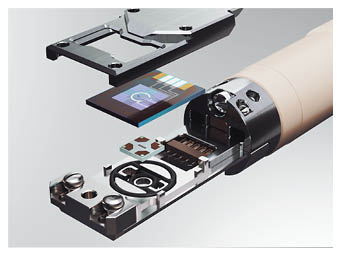
Liquid Heating and Cooling Electrochemical Cell
- Self-aligning holder.
- Heating and cooling with simultaneous quantitative electrochemistry.
- Relevant electrode materials for easy comparison to bulk-scale results.
- Optimized for in situ EDS in a liquid-filled cell.
- Wide chemical compatibility due to robust gasket materials.
- No holder disassembly required for cleaning and maintenance.
Scale Bulk to Nano with Relevance
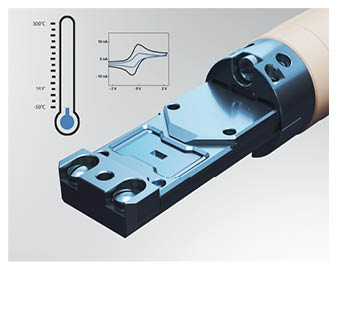
Enable the study of nanoscale structural changes that affect bulk-scale function at extreme temperatures.
Accelerate User Productivity
Sample preperation | Data collection | Data analysis
Thoughtfully designed arsenal of tools that support reproducible
sample preparation and fast introduction into the TEM.
Protochips Triton AX Application Example:
Triton AX Application Example: Evaluating the kinetics of electroplating at hot and cold temperatures
This videos shows copper plating and stripping on the platinum working electrode of our E-chips at two different temperatures (cold: 5°C and hot: 98 °C) highlighting the possibility of performing electrochemical experiments at a wide range of temperatures [no other in situ TEM holder offers liquid cooling with simultaneous electrochemistry].
With a system like this researcher can study and improve battery performance at extreme temperatures like cold climates, electrocatalytic operation at relevant elevated temperatures, corrosion-resistance at varying temperatures and more.

